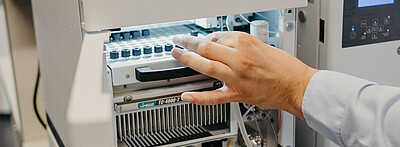Adaptation of red wine technology to the
climate-related variance in phenolic grape ripeness
Phenolic ripeness sets the tone! Key process for the production of full-bodied red wines
They are in particularly high demand on the German and international wine market: red wines with strong color, full body and tannins, a harmonious balance of acidity and astringency and a balanced taste. Many regions in Germany are also suitable for the production of such high-quality red wines - and many wine producers have recognized this:
35% of the vineyard area is now planted with red wine grape varieties such as Pinot Noir, Lemberger or Dornfelder. The particular challenge for local red wine production lies in changing weather conditions, which fluctuate more strongly here than in other countries. Climate change exacerbates this situation through rising average temperatures, extreme rainfall events or months of prolonged drought. In order to counter these vintage fluctuations in viticulture and to be able to optimally control the complex process of red wine production in the wine cellar, precise knowledge of the interrelationships is required to adapt the oenological processes.
This is where an Industrial Collective Research (IGF) project comes in, which is all about phenolic ripeness: Which phenols are present in which concentration in the berry skins, which in the seeds and how well can they be extracted? By determining these ripening parameters, the scientists from Neustadt a.d. Weinstraße and Bonn want to provide winegrowers for the first time with tools that they can use to adapt their red wine technology to the ripeness of the grapes. The initial aim is to characterize red wines from grape varieties that are mainly grown in Germany more precisely in analytical and sensory terms. Wines made from grapes at different stages of ripeness will be examined. On the basis of this data, the researchers then want to develop a decision support system for winegrowers, with which they can control their oenological processes in such a way that they can produce colorful, full-bodied and tannin-rich red wines from grapes that have different degrees of ripeness due to the weather.
The 18,700 wineries in Germany - the majority of which are small family businesses - are thus given new methods to produce red wine qualities that are in demand on the national and international market. Only with such quality products can German winegrowers stand up to the global players in the wine world and successfully counter the competition from imported red wines.

Downloads

Sandra Feifel

